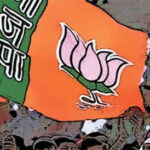A Rural Manifesto sparks a national conversation on rural distress, highlighting the potential solutions to putting the village economy on an even keel, while exploring how the vast majority of India ekes out a living. In this heartfelt and timely book, covering facets of the Indian rural economy, Feroze Varun Gandhi shines a bright light on the travails of the marginal farmer and asks searching questions on why the rural economy remains in doldrums, six decades after Independence. Through a series of vignettes, the book explores rural India’s innate perseverance and highlights potential solutions in development policy with a focus on making the rural economy resilient. Feroze Varun Gandhi is a second-term Member of Parliament, who represented the Pilibhit constituency in 2009, and was elected from the Sultanpur constituency in 2014. He was the youngest ever National Secretary of the BJP from 2008–11, and the youngest ever National General Secretary of the Party from 2011–14. He is a member of its National Executive.
Through a series of vignettes, the book explores rural India’s innate perseverance and highlights potential solutions in development policy with a focus on making the rural economy resilient. Feroze Varun Gandhi is a second-term Member of Parliament, who represented the Pilibhit constituency in 2009, and was elected from the Sultanpur constituency in 2014. He was the youngest ever National Secretary of the BJP from 2008–11, and the youngest ever National General Secretary of the Party from 2011–14. He is a member of its National Executive.
A member of the Executive Committee of the Commonwealth Parliamentary Association, Gandhi has been a member of several Parliamentary Standing Committees, including those on defence and external affairs. Published here is the preface, where Gandhi explains his rationale for the book and the urgency for tackling the issues facing rural India.
THE idea of writing a tome, nay, a dense synthesis of facts, forecasts and, at times, personal anecdotes, came from my travels in India’s dusty hinterland. Whether it was campaigning in the deltaic regions of West Bengal, conducting field visits in the vicinity of Sultanpur and Pilibhit, or more simply, meeting students of provincial universities in states often forgotten by national media, the cause of marginal farmers and their current dismal condition struck a chord with me. This issue, once proudly espoused by all up-and-coming politicians, was at once an intellectual and emotional problem, and one with no easy solutions.
Farmers in Champaran district in Bihar, a century back, under the Tinkathia system, were forced to set aside 15 per cent of their land for the cultivation of indigo. Even after these were planted, the farmers were still subject to a variety of extortionist cesses, termed ‘abwabs’–even the cost of an elephant for colonial shikaar was included. Farmers naturally rose in resistance in the thousands, but were crushed by the East India Company until the arrival of a barrister from South Africa, who fought for the cause of the harassed tillers of the soil. And yet, a century after the Mahatma sought freedom from exploitation for them, India’s farmers remain a beleaguered lot.
In Majuli district of Assam, farmers are increasingly taking to eating beetles, as a way of beating back pests from their marginal farms. Meanwhile, in Maharashtra, onion farmers routinely see over 20 per cent of their produce wasting due to lack of cold storage facilities. Consider the landscape that India’s farmers survive in. The country’s heat-baked plains are criss-crossed by a range of turbulent rivers, many worshipped and dreaded since prehistory. Such rivers have repeatedly altered course, changing the way they deposit sediment during the monsoons, and overrunning ancestral fields. Even major distributaries would end up getting diverted—consider the case of the Bhagirathi in West Bengal, whence the main course of the Ganga shifted eastwards towards the Padma; and post the floods of 1770, even the Damodar witnessed a change of confluence point. For India’s farmers, agricultural risk has been ever-present. They have to take a variety of decisions, right from choice of crops (annual or short-term) to time of tillage. The challenge is further exacerbated by rising prices of agricultural inputs, availability of water, soil suitability and pest management. All these decisions and uncertainties narrow the window of economic benefit for the marginal farmer. A faulty decision can wreak significant havoc. The viability of being a marginal farmer is further eroded due to macro developments.
 This uncertainty is reflected in rural debt levels. Large farmers (>10 hectares) in Punjab typically have a debt-to-income ratio of 0.26, while medium farmers (4-10 hectares) and semi-medium farmers (2-4 hectares) have a debt-to-income ratio of 0.34–all seemingly affordable. However, small (1-2hectares) and marginal farmers (< 1 hectare) face a greater burden of debt, with a debt-to-income ratio of 0.94 and 1.42, respectively, with over 50 per cent of their loans from non-banking sources.
This uncertainty is reflected in rural debt levels. Large farmers (>10 hectares) in Punjab typically have a debt-to-income ratio of 0.26, while medium farmers (4-10 hectares) and semi-medium farmers (2-4 hectares) have a debt-to-income ratio of 0.34–all seemingly affordable. However, small (1-2hectares) and marginal farmers (< 1 hectare) face a greater burden of debt, with a debt-to-income ratio of 0.94 and 1.42, respectively, with over 50 per cent of their loans from non-banking sources.
With the average landholding size decreasing (from 2.3 hectares in 1971 to 1.16 hectares in 20 11) and average input prices rising, the cost of cultivation has increased, and with it margins associated with farming have reduced. Media reports highlight that a farmer can now typically earn between Rs. 2,400- Rs. 2,600 per hectare, tilling fields of paddy or wheat, while farm labourers can earn less than Rs. 5000 per month. Real farm wages have grown at an average annual growth rate of 2.9 per cent between 1991and 2012, with farm wages actually declining between 2002 and 2007. About 30.5 million peasants quit farming over 2004-05 and 2010-11, seeking employment in the secondary and tertiary sectors. The size of this agricultural workforce is expected to shrink to ~200 million by 2020. When we talk of rural distress, these are some of its symptoms.
MINIMUM support prices (MSPs) have also declined. Food inflation has declined significantly over the past year, with the price of arhar down by 45 per cent in April 20 17 compared to the previous year, while the price of urad has declined by 29 per cent. Soyabeans were down by 24 per cent, while potatoes were cheaper by 41 per cent in Apri120 17. Expansion in acreage, along with improvement in procurement, a rise in buffer stocks and imports, and global agro-commodity trends, along with fire sales during the demonetisation period have combined to accentuate the fall in food prices, especially for pulses (13.64 per cent decline year over year) and vegetables (7.79 per cent decline year over year). Meanwhile, the average growth in minimum support prices of kharif crops has been ~4 per cent, compared to the ~13-15 per cent growth seen between 20 10 and 2013.
The dismal consequence is acutely depressed farmers committing suicide. Officially, around 12,602 individuals associated with the farm sector committed suicide in 2015, about 2 per cent more than 2014. Farmer suicides have increased primarily in states with limited irrigation and variable rainfall (e.g. Maharashtra, Karnataka, Telangana, Chhattisgarh, Andhra Pradesh, Tamil Nadu and Madhya Pradesh), which contribute 87.5 per cent of total farmer suicides in 2015. Over 321,428 farmers have committed suicide in the past twenty years.
India’s agricultural strategy has historically sought to raise productivity (through high-yield varieties) while seeking to keep input costs low (through fertiliser subsidies and seed •grants), and attempting to guarantee a minimum return (through minimum support prices). Meanwhile, consumers were provided cheap food through the public distribution system. However, this strategy has outgrown its utility–India’s agricultural inputs market is increasingly deregulated, with subsidies for fertilisers being cut. Public investment in irrigation, flood control and high-yielding varieties has been affected by a shift towards lessening the fiscal deficit. Liberalised imports of agricultural commodities have also done their bit to dampen domestic prices. The viability of being a marginal farmer in India has been eroded. Meanwhile, governments have sought to address production shortfalls and rising food inflation in urban markets by liberalising imports and releasing buffer stocks into the market, further reducing prices. Thus, even in good harvest years, farmers end up with low minimum support prices and limited procurement of their produce: So, India’s agriculture sector is increasingly exposed to market signals that it hasn’t been prepared for.

Amidst this, access to agricultural inputs has become more fraught-large farmers in Maharashtra typically have access to modern pumps, thereby consuming large amounts of water, and leaving little, if any, for small and marginal farmers. Fertiliser and pesticide prices have risen continuously over the past few years, causing marginal farmers to adopt organic means instead. The high cost of high yielding seed varieties, combined with limited availability in India, also hampers agricultural productivity. Given such constraints, farmers have limited scope for diversification. Unfortunately, there are limited capacity building programmes and extension services for farmers, with universal access far from being achieved.
Institutional support for mitigating the plight of such farmers has been provided in various forms since Independence. The National Bank for Agriculture and Rural Development (NABARD) was established in 1982, seeking to provide financing support to tube well irrigation, farm mechanisation and other ancillary activities. The institution of a nationwide agriculture loan waiver in 1990 had a deleterious impact, breeding credit indiscipline and hampering rural credit growth. The 2004-05 Union budget sought to double agricultural credit, while a 2 per cent interest subvention was provided in 2006, allowing farmers to avail of Kisan Credit Card (KCC) loans at per cent per annum (up to 3 lakh). Another agricultural loan waiver was provided in 2009, just prior to the Lok Sabha elections. Small and marginal farmers certainly deserve greater support from the government. However, India’s historic agricultural policy has disincentivised the creation of a formal credit culture amongst Indian farmers. If waivers are so common, why would any farmer seek to pay off their loan on time?
Ideally, India ought to have no rural distress–we have the second-largest quantity of arable land in the world. And yet, less than 35 per cent of this land is irrigated, with the remnant land subject to fluctuations in rainfall. Growth in agriculture and allied sectors has almost been offset by rural inflation. With small farm sizes and rising agricultural input costs, farmers have increasingly grown indebted. Rural India remains where it was, mired in its own abyss.
The writing is on the wall: India’s small and marginal farmers will need another agricultural loan waiver. However, granted this once, it just cannot continue in the future. There are other ways to mitigate their plight. We need more subsidies on the purchase of agricultural equipment, fertilisers and pesticides, along with expanding medical insurance coverage. In addition, the scope of the Mahatma Gandhi National Rural Employment Guarantee Act (MGNREGA) could be increased. Allowing marginal farmers to be paid for tilling their own fields could reduce their input costs; they can’t afford other agricultural labourers and find it socially awkward to till someone else’s field. Such measures could increase their net income, while reducing the scope of rural distress. Small steps like these can make a meaningful contribution to their lot.
For centuries, India’s economic strength was based on the agricultural surplus generated by its farmers, and the trade revenues brought in by its rural entrepreneurs in handicrafts, calico and metalworks. And yet, suddenly, over the past few centuries, India’s natural competitive advantage vanished. Our agricultural techniques became outdated and our handicrafts, once pillaged by the British, found fewer and fewer markets as the years passed. Such a progression rouses “natural questions–how did India’s demographic change transform its rural economy? How do we transition out of this to rural prosperity?
One requirement is retailoring our concepts. For centuries, we have been besotted by the notion of villages being self-sufficient and self-regulating.
The idea that an Indian village was isolated and yet self-sufficient was first propounded by Charles Metcalfe in 1830— ‘the village communities are little republics, having nearly everything that they can want within themselves, and almost independent of any foreign relations. They seem to last where nothing else lasts. Dynasty after dynasty tumbles down; revolution succeeds to revolution; Hindoo, Pathan, Moghul, Mahratta, Sikh, English, are all masters in turn, but the village communities remain the same.’ Karl Marx also popularised the idea of village self-sufficiency— ‘Under this form of municipal government, the inhabitants of the country have lived from time immemorial. The boundaries of the village have been but seldom altered, and through the villages themselves have been sometimes injured and even desolated by war, famine and disease, the same name, the same limits, the same interests, and even the same families have contributed for ages.’
 MOST writers of rural India have taken the idea of village autonomy and autarchy for granted, categorising the village as a standalone community, with limited interaction with the wider economic, political and religious systems. More recently, questions have been raised about the idea of a nucleated village, with clear boundaries between one village and another. Migration patterns, farmer suicides and stagnating rural incomes, along with increasingly ad hoc land acquisition in the name of public good, have politicised the idea of rural economics.
MOST writers of rural India have taken the idea of village autonomy and autarchy for granted, categorising the village as a standalone community, with limited interaction with the wider economic, political and religious systems. More recently, questions have been raised about the idea of a nucleated village, with clear boundaries between one village and another. Migration patterns, farmer suicides and stagnating rural incomes, along with increasingly ad hoc land acquisition in the name of public good, have politicised the idea of rural economics.
Is a village simply a vertical economic unit composed of various castes, bound by ties of kinship, marriage and economic obligations? Or should we consider its deep dependence on towns for specialised services (construction, transportation, healthcare, education, etc.) as part of the hinterland’s paradigm? How does economic policy at the village level result in sustainable and growing per capita income, while providing essential services and a safety net? How can agriculture be revived in an era of fragmented landholdings and rising input and fuel prices? Does the rural economy offer enough opportunities to quell rising discontent? Why does construction offer the only hope for rural youth, bereft as they are of any transferable skills in an urban context?
Furthermore, we need a national conversation on rural distress. Much like the decline of the peasant, the interest of historians and social policy observers has also dwindled with regard to capturing their fate. India’s rich history has been illustrated with a range of tomes about kings, queens, nawabs and soldiers, and in some cases, even traders and yet, the peasant himself, and the village economy he sustains, have drawn limited attention. As Eric Stokes, the most famed of agrarian historians at Cambridge, recognised, ‘the balance of destiny in South Asia rests in peasant hands.’ The challenge, however, has been to capture the travails and tragedies of a social group that resists classification and leaves little, if any, records. The 1970s and 1980s saw renewed focus on empirical research that sought to provide a historical reconstruction of our agrarian economy, seeking correlations and dependencies on a range of social factors and social groups. In India, the history of land, especially in rural India, has somehow not gone alongside the history of capital, subsuming documentation about changes in the rural economy under the dialectic between capitalist development and the proletarian masses. Unlike during the Champaran Satyagraha, national attention has been curiously lacking. We must empathise with India’s marginal farmers and we must make the choice to support them.
POLICYMAKING in a country riven by rural poverty, social fault lines and inadequate infrastructure should be focused on alleviating rural hardships while building the infrastructure for future growth. The pursuit of grandiose urban infrastructure and gigantic symbolic statues is a luxury for other nations. This book hopes, through a series of vignettes, to elucidate such issues, with their constraints and potential solutions. It hopes to highlight experiences from my decade-long public life, serving as a Member of Parliament (MP) for mostly rural constituencies, while drawing lessons from sociological experts and development policy. This set of experiences has been distilled into a rural manifesto, one that could help to shift the contours of the rural economy towards a more positive bearing for the marginal farmer.
In writing this heartfelt and, perhaps, timely set of essays on the village economy, I am deeply indebted to India’s rich tradition of agricultural economists and agrarian historians, whose contribution is recognised through footnotes scattered across pages. Writing this book has been a learning experience for me as well, helping me understand India’s rhythm, particularly of its villages and the aspirations of those living in them. I have travelled far and wide, across a multitude of Indian towns, villages and habitations, and everywhere I have heard stories of sorrow and yet been witness to the generosity and resilience that rural Indians possess. I have drawn on the resources and goodwill of a variety of people, including my research team. Finally, my mother and my wife have lent unstinting emotional and intellectual support, while providing me with a sense of empathy for the downtrodden. It is to them, and my daughter, that I dedicate this book.































































